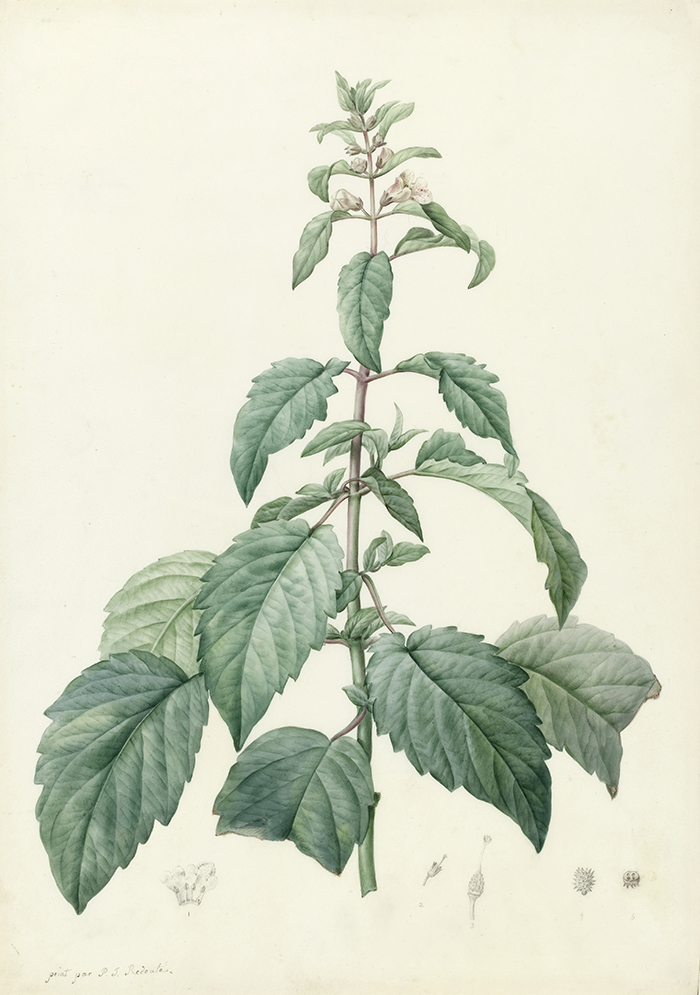Botanical illustration is often admired for its beauty and accuracy, which can mask the ways in which the plant was acquired in the first place and the brutality of the war and violence which enabled the plant to be seen, studied, collected and painted.
In the collage Woven Histories, Claire O'Brien weaves together the Fitzwilliam Museum's beautiful watercolour of the plant josephinia imperatricis, named for the French Empress Joséphine, with a commanding image of Joséphine's husband Napoleon Bonaparte. It's impossible to see one without the other.
Woven Histories
Collage combining Josephinia imperatricis by Pierre-Joseph Redouté (now in the Fitzwilliam Museum) and Napoleon Crossing the Alps by Jacques-Louis David (now in the Malmaison Palace, Paris).
Claire says, "I liked the pyramidal structure of the plant and knew of the similar composition in the painting. ... Empress Josephine tended the floral specimens such as this, that arrived at Malmaison for her from around the world, and they were recorded by the greatest botanical artists of the day. This version of the painting of Napoleon now hangs at Malmaison. The existence and histories of the two images are woven together.
The more 'back stories' we can learn about objects in museums, the richer the experience and greater understanding we can apply to our lives in the present. This story is about conquest, commodity, cultural exchange, theft, the natural world, science and human ingenuity, and art...and probably more!"
Museum Remix Guest Curator Lucian Stephenson writes, "It illustrates with razor precision the combined histories of botanical science and warfare, the voices that are heard and unheard, the uncomfortable marriage of discovery and bloodshed, and - as the artist says - 'probably many more!'."
The painting that inspired the artwork: josephinia imperatricis by Pierre-Joseph Redouté

This plant isn't a humble nettle, but josephinia imperatricis, named after Empress Joséphine, the wife of Napoleon Bonaparte.
Joséphine (1763-1843) filled the Malmaison Palace in Paris with exotic plants from the lands her husband Napoleon had conquered - and beyond. Josephinia imperatricis comes from Australia, then known to Europeans as New Holland. Specimens were collected by a French scientific expedition led by Captain Hamelin, which returned to France in 1803 with a huge collection of plants and seeds.
There are lots of gaps in our knowledge about this story. Who helped Hamelin and his expedition amass such a wealth of natural resources? Did they seek the expertise and guidance of local people whose stories and contributions to the discovery of new plants have been missed out? And what about Joséphine herself? Should she be recognised for furthering botanical knowledge, or was she simply satisfying her own desires and displaying her wealth and power through her global collection of plants?
Claire O'Brien's Woven Histories forces us to confront the relationship between the delicate plant and Napoleon's conquests: the relationship between scientific knowledge by imperial conquest.
This artwork is part of the Museum Remix: Unheard project, and is featured in the Museum Remix: Woven Histories digital exhibition.


